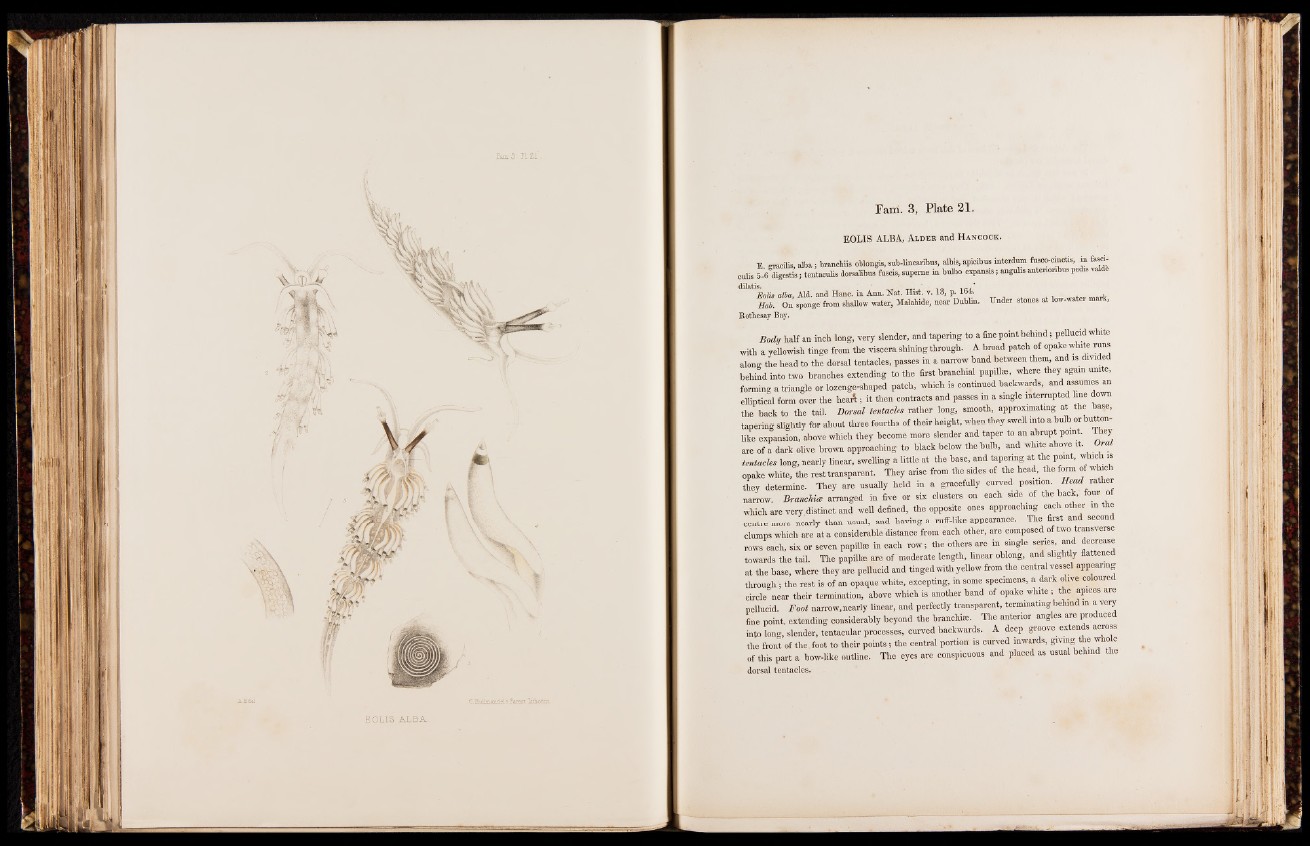
EOLIS ALBA
EOLIS ALBA, A l d e b a n d H a n c o c k .
B gracilis, alba; branchiis oblongis, snb-lmearibns, albis, apicibus mterdum fi^co-cinctis, in H
cobs 6-6 digest»; tentaouKs dorsabbus fascia, supeme in balbo expands; angubs antenonbus pedis valde
dilatis. * ' . *
Eolis aUa, Aid. and Hanc. in Ann. Nat. Hist. v. IS, p. 164. . ,
Hab. On sponge'from shallow water, Malahide, near Dublin. Under stones at low-water mark,
Rothesay Bay.
Body half an inch long, very slender, and tapering to a finepointbehind I pellucid white
with a yellowish tinge from the viscera shining through. A broad patch of opake white runs
along the head to the dorsal tentacles, passes in a narrow hand between them, and is divided
behind into two branches extending to the first branchial papillae, where they again unite,
forming a triangle or lozenge-shaped patch, which is continued backwards, and assumes an
elliptical form over the heaA; it then contracts and passes in a single interrupted hue down
the hack to the tail. Dorsal tentacles rather long, smooth, approximating at the base,
tapering slightly for about three fourths of their height, when they swell into a bulb or buttonlike
expansion, above which they become more slender and taper to an abrupt point. They
are of a dark olive brown approaching to black below the bulb,' and white above it. Oral
tentacles long, nearly linear, swelling a little at the base, and tapering at the point, which is
opake white, the rest transparent. They arise from the sides of the head, the form of which
they determine. They are usually held in a gracefully curved position. Head rather
narrow. Branchial arranged in five or six clusters on each side of the back, four of
which are very distinct and well defined, the opposite ones approaching each other m the
centre more nearly than usual, and having a ruff-like appearance^; The first and second
clumps which are at a considerable distance from each other, are composed of two transverse
rows each, six or seven papillse in each row, the others are in single « p s , and decrease
towards the tail. The papillse are of moderate length, linear oblong, and slightly flattened
at the base, where they are pellucid and tinged with yellow from the central vessel appearing
through '; the rest is of an opaque white, excepting, in some specimens, a dark H coloured
circle near their termination, above which is another band of opake white ; the apices are
pellucid. Foot narrow, nearly linear, and perfectly transparent, terminating behind in a very
fine point, extending considerably beyond the branchiae. The anterior angles are produced
into long, slender, tentacular processes, curved backwards. A deep groove extends across
the front of the.foot to their points; the central portion is curved inwards, giving the whole
of this part a bow-like outline. The eyes are conspicuous and placed as usual behind the